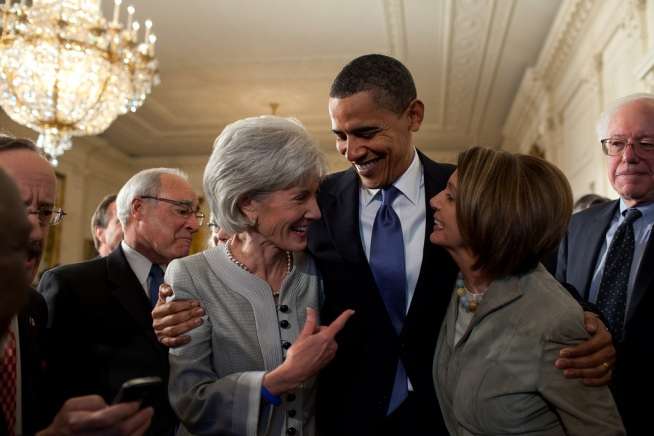The New York Times Issues a Press Release for ObamaCare

Over the weekend, The New York Times published an unsigned editorial defending President Obama's health care overhaul. The headline describes the piece as a "report card" on the health law on its third anniversary, but it does not attempt to grade ObamaCare so much as extoll its virtues; it's barely distinguishable from an administration press release.
The editorial offers a litany of facts and statistics in support of the law, pointing out the "considerable benefits" it has already delivered. But there's less than meets the eye to many of these supposed benefits—and, perhaps more importantly, the editorial completely ignores the cost of providing them.
The piece notes, for example, that "private insurers are now required to cover children with pre-existing conditions, which means that an estimated 17 million such children have been protected against being uninsured." The fact that the Times points only to the entire class of people who have been "protected" suggests that it cannot determine how many, if any, have actually taken advantage of the benefit. Certainly it directly affects far less than 17 million children. Initial estimates indicated that somewhere between 31,000 and 72,000 would be covered as a result of the new requirement.
The Times also declines to note that at least half a dozen insurers responded to the requirement by simply refusing to offer child-only health policies. How many children benefited from this side-effect of the regulation?
The editorial also cites the statistic that "some 71 million Americans have received at least one free preventive service, like a mammogram or a flu shot, and an additional 34 million older Americans got free preventive services in 2012 under Medicare." Here the resemblance to an administration press release becomes even sharper; this was literally the subject of a Health and Human Services press release last week. And like that press release, the Times fails to note that the allegedly "free" preventive services mandated by the law raise the price of health insurance premiums—and, according to most studies, are of the sort that tend to raise overall health spending.
It does, however, claim that the law is "saving consumers money." In support, the piece points to the law's medical loss ratio ((MLR) requirement, which requires insurers to spend 80 percent of health premium revenue on medical services or rebate the difference, but unsurprisingly fails to note the fairly strong reasons to believe that the requirement is actually causing premiums to rise by creating incentives to charge high up front premiums that can perhaps be rebated later.
The editorial also points to the law's rate review provisions, which it says have reduced the number of insurance plans seeking large rate hikes. But once again, the Times overstates its case. A 2012 review of the rate-review provisions by the Kaiser Family Foundation found that one in five rate requests ended up lower in states performing their own review of rate increases, but also notes that because many of those states already had rate-review programs in place prior to ObamaCare's passage, it's not possible to fully attribute that effect to the health law. And in states where rate-review was conducted entirely by the federal government, and thus entirely attributable to the law, it seems to make little difference: Kaiser analyzed 48 federally administered rate-increase reviews; of the 37 rate hikes deemed "unreasonable" by HHS, only one was subsequently withdrawn by the insurer—and it was later resubmitted at exactly the same rate.
The Kaiser report also notes that insurers justified large rate increases by saying that if necessary, they would make it up with the rebates provided under the MLR rule—further suggesting that insurers are acting on the incentives the provision provides to charge high up front premiums.
But never mind all that. ObamaCare, the NYT editorial says, is "a start toward reforming the costly, dysfunctional American health system," which is just what one would expect an administration press release to say.
Indeed, The New York Times could probably have saved itself the trouble of writing an original editorial and instead sent readers directly to the source.
In addition to the topics discussed above, the editorial also mentions the $11 billion the law appropriates for community health centers, the 6.6 million adult children who have been allowed to stay on their parents' health plans because of ObamaCare, and the 6.3 million seniors and disabled adults who have it says have saved $6.1 billion on prescription drugs thanks to the law's closing of a gap in Medicare Part D coverage. You can read the HHS press releases on those provisions here, here, and here, respectively.

Show Comments (112)